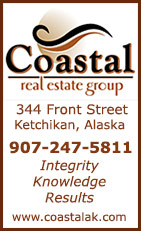|
Fish Factor Covid cuts into annual fish, crab surveys; get weekly salmon stats, sign up for fish!By LAINE WELCH June 07, 2020
In what they called an “unprecedented” move, NOAA Fisheries announced in late May that five Alaska surveys will be cancelled this summer “due to the uncertainties created by the COVID-19 pandemic, and the unique challenges those are creating for the agency.” NOAA said in a statement that they found “no way to move forward with a survey plan that effectively minimizes risks to staff, crew, and the communities associated with the surveys.” The annual surveys are the cornerstone of Alaska’s sustainable fisheries management and provide data on how fish stocks are trending, where they are and, ultimately, how much will be allowed for harvest each year. The cancellations include bottom trawl surveys at the Aleutian Islands, the eastern Bering Sea and the northern Bering Sea, the Bering Sea pollock acoustics survey, and the fall ecosystem survey. To reassure stakeholders, NOAA said “we are fortunate to be working in a robust management system with a long time series of fisheries and ecosystem data and stock assessment models which helps ensure there is limited conservation impact from the loss of survey data this year.” The agency also plans to use three wind-powered Saildrones equipped with echosounders to survey Alaska pollock stocks, which over 60 days will cover nearly the same area done by research vessels. NOAA also will gather data from state and industry partners and from fisheries observers. That’s small comfort to some, notably, fishing towns that count on cod. The Gulf of Alaska cod fishery was closed this year due to a collapse of the stocks from extremely warm water temperatures over several years that killed off two year classes. “We are concerned that with no surveys, the stock assessment will remain status quo and the GOA Pacific cod federal fishery will again be closed for 2021,” Alvin Osterback, mayor of the Aleutians East Borough, wrote in a letter to the North Pacific Fishery Management Council, which oversees the stocks from three to 200 miles offshore. Likewise, Bering Sea crabbers are feeling uneasy. While they “understand the constraints the agency is under given this pandemic,” crabbers worry the lack of surveys could result in more conservative catch levels. “We're very disappointed and concerned given the status of many of our crab stocks,” said Jamie Goen, executive director of Alaska Bering Sea Crabbers, a trade group. “Our bairdi Tanner fishery was closed this past year and our red crab fishery is approaching thresholds of closing. We rely on having a survey every year.” The complex process of setting crab harvest limits already includes a myriad of built-in protection buffers, Goen said, and the lack of one data point should not add more. Goen credited NOAA’s “crab team” for working closely with the industry and said ABSC already is looking towards next year. “How can we start planning now so that this doesn't happen again if we're still under the same restraints with a pandemic?” Goen asked. “Generally, the government only allocates survey money for one year. Can they guarantee that we'll have that money next year? What if there's constraints on government staff? One of the things we can do in advance is a lot more planning for next season.” “We all need to be understanding that the whole world is adjusting to a different situation right now,” Goen added. “Our fishing industries in Alaska are suffering and it’s a lot more expensive and stressful just getting our operations out the door. We’ve all got to roll up our sleeves and help each other out and find solutions to make sure we can continue to put food on people’s tables.” Halibut surveys reduced: Similarly, the annual survey of the Pacific halibut stock also will have a “reduced footprint” this summer. A total of 898 stations will be surveyed, down 385 (30%) from the originally planned 1,283 stations “as a result of the impacts and restrictions that the COVID-19 pandemic has had on our field operational capacity and concern for our fishing communities coastwide,” according to a May 29 announcement by the International Pacific Halibut Commission. There are a total of 1,890 set line halibut survey stations ranging from the west coast states and British Columbia to the far reaches of the Bering Sea, and typically 1,100 to 1,200 are assessed each year, said David Wilson, IPHC executive director. About 17 longline vessels are usually contracted to conduct the surveys; this year 11 boats will participate. The survey duration also is reduced to July 1 through August 31, instead of starting in June. The areas that will forego surveys this summer include waters off California, Oregon and Washington. For Alaska, areas 4CDE in the Bering Sea near the Pribilof Islands were cut, along with Areas 4A and 4B of the Aleutian Islands near Unalaska and Adak. “We also thinned out a little bit in 3B, the Western Gulf of Alaska, and we also removed the stations off Vancouver Island,” Wilson explained. He added that low halibut prices also affected their decision to reduce stations. The fish caught are sold to cover the costs of the surveys. “We're looking at getting paid about 25% to 30%, less than in 2019,” Wilson said. Wilson agreed that when annual survey data is missing, it increases the level of uncertainty in stock assessments. But the IPHC believes it is acceptable for one year, Wilson said, adding, “we don't have to sample every station every year.” “We're going to maintain sampling in the core regions where about 74% of the known distribution and biomass of the halibut stock resides. So it's still going to be a robust survey,” Wilson said. “The other thing to note is that we do this on an annual basis, and I don't think there are any other surveys of this nature on this scale which then feed into annual stock assessments. We actually ran the scenario of what happens if we don't survey this year at all and we would still feel confident that we would have very robust estimates of spawning stock biomass and mortality limits (catch limits) for 2021.” Free salmon updates: More Alaska salmon fisheries are opening up around the state and weekly updates track catches and trends in every region. “We email them out at the beginning of every week that cover the prior week’s salmon harvests statewide, broken out by region,” said Garrett Evridge, a fisheries economist with the McDowell Group in Anchorage. “The goal is to provide context for what our state is harvesting relative to the prior year and historical averages and to highlight interesting things that are happening in near real time throughout the salmon season.” His team compiles the weekly salmon send outs under contract with the Alaska Seafood Marketing Institute, and they work closely with the Alaska Dept. of Fish and Game to get the weekly numbers out as quickly as possible. “Over the last few years, we've narrowed the delay from about a week to 10 days to just a few days,” Evridge said. “Fisheries are happening statewide that conclude on the weekend and by Monday and Tuesday, we're getting that information out to everybody. So it's near real time.” Sign up for the free weekly salmon updates at garrett@mcdowellgroup.net / Fish subscriptions and feeding the needy: Alaskans Own, the state’s first ever Community Supported Fishery (CSF), is celebrating 11 years of its subscription service to seafood lovers. “A Community Supported Fishery project relies on forward funding from subscribers who pay in the beginning of the season and then receive fish on a regular basis, in our case, it's once a month,” said Linda Behnken, executive director of the Alaska Longline Fishermen’s Association in Sitka. Up to 80 local boats supply a mix of salmon, halibut, rockfish, lingcod, sablefish and more to the program. “And the idea behind it is that consumers are getting to support the small scale, community-based fishermen who are bringing them the highest quality product, and we're keeping more of that great Alaska seafood in Alaska,” Behnken added. Just one percent of Alaska’s billions of pounds of seafood remains in-state, and while many of their nearly 300 subscribers are from the Lower 48, Behnken says Alaska residents make up a good chunk of supporters. Subscribers also get seafood cooking lessons via Zoom. “Most people in this country eat seafood more at restaurants than anywhere else, and many people still are daunted by cooking seafood at home,” Behnken said. “So, one of the benefits we offer to our customers is that after they get their fish, a chef will, make dinner with them through Zoom.” All CSF proceeds fund ALFA’s Fisheries Conservation Network in which fishermen and scientists partner on projects like mapping bycatch hotspots, testing electronic monitoring, fuel efficiency projects and strategies to avoid longline predation by sperm whales. Shortly after the coronavirus hit, Alaskans Own also started working with the Seafood Producers Cooperative and Sitka Sound Seafoods to donate fish to needy families. “We've set up a system where people can contribute to support the cost of processing, the cost of delivery and the fish is donated,” Behnken said. We've been supported by the Sitka Legacy Fund, Silver Bay Sea”foods, Slow Fish, along with 25 individual donors.” Over 800 pounds have been delivered to local families so far and Behnken said the donations will continue into the fall. Learn more at alaskansown.com/
SitNews ©2020 Stories In The News Ketchikan, Alaska
|
||||




